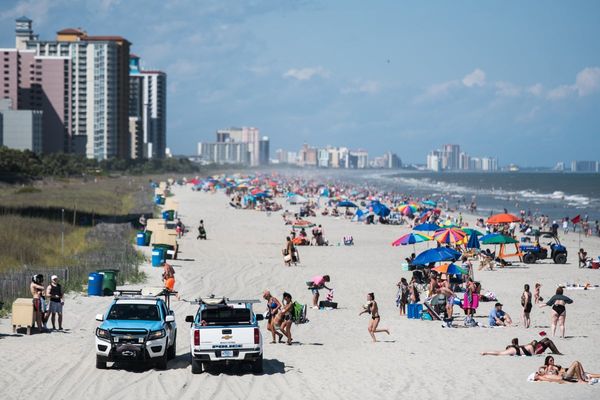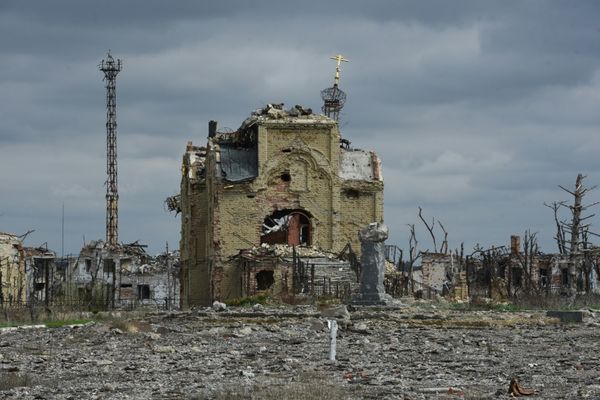
A federal election, Donald Trump’s return to the White House and (perhaps) some interest rate relief.
Here are the events that will define federal politics in 2025.
An election hanging in the balance
Voters have elected hung parliaments in Canberra just twice in the past 125 years – in 1940 and 2010.
A third minority government is a near certainty after the 2025 federal election according to most published opinion polls, which suggest Labor’s sagging primary vote will not be enough to retain its two-seat majority.
Just three years after the Scott Morrison-led Coalition lost 19 seats in a thumping election defeat, Peter Dutton is considered a chance of returning the Liberals and Nationals to power in some form.
Expect dire warnings about the “chaos” of minority parliaments to be peddled throughout the campaign, with Anthony Albanese and Dutton likely to emphatically rule out “doing deals” with the crossbench to shore up power – only to backtrack if their party falls a few seats short on election night.
As for the timing of the election, which must be held before 17 May, the prime minister is keeping his options open.
Handing down the budget as planned on 25 March seems unlikely given the state of the books, strengthening the case for a March or April poll.
The big questions facing Albanese and Dutton
Albanese’s declining popularity – his net approval rating was at -11 in the final Guardian Essential poll of the year – was one of the defining trends of federal politics in 2024.
Arguably the prime minister’s best moment of 2024 came early on with the decision to redesign the stage-three tax cuts, breaking an election promise in order to deliver cost-of-living relief to all 13.6 million taxpayers.
But that single bold move was not a precursor to a wider shift in strategy as Albanese sought to avoid fights for the remainder of the year, including on environmental laws and religious discrimination.
As he rushes to regain his mojo in time for the campaign, whether Albanese chooses to be bold or safe in the new year could decide his, and his party’s, fate.
Dutton, meanwhile, has surged into election contention with a threadbare policy agenda that is yet to be subjected to sustained scrutiny.
The opposition leader has largely avoided the Canberra press pack in the past three years but he won’t have that luxury on the election campaign trail, where he and his policies will face a daily grilling.
Trump 2.0
The world has hung in a state of suspended animation since Donald Trump’s US presidential election win in November, awaiting his inauguration on 20 January and the start of his second presidency.
The Albanese government has preached a message of calm, assuring voters that Australia can weather the inevitable upheaval and economic shocks of Trump’s radical America-first agenda.
The prime minister has highlighted Washington’s trade surplus with Canberra as he mounts an early case for Australia to be exempt from the tariffs the incoming president is threatening to impose on all imports.
The government’s relationship with Trump and his unconventional cabinet picks, the future of the Aukus deal and the incoming president’s early response to conflicts in the Middle East and Europe (he’s promised to swiftly end the Russia-Ukraine war) will help shape Australia’s foreign and domestic policy in 2025.
A climate juncture
The coming year represents yet another fork in the road for climate policy in Australia, a critical juncture that will determine the pace – and possibly the fate – of the clean energy transition.
The major parties will go to the election pushing vastly different policies on climate action and energy security: Labor advocating a renewables-focused path to net zero and the Coalition campaigning for nuclear power.
If Labor wins, the focus will quickly turn to setting a 2035 emissions reduction target and potentially preparing to host the Cop 31 climate summit – assuming rival bidder Turkey bows out of the running.
But the election of a majority Coalition government would cast a pall of uncertainty over the clean energy shift, with renewables investors likely to reassess projects against the backdrop of Dutton’s nuclear ambitions.
The first of many hurdles a future Coalition government would face to realise its plan to build reactors at seven sites would be convincing the Senate to overturn the John Howard-era federal ban on nuclear power.
Interest rates
Politicians and mortgage holders will be glued to the news on 18 February as the Reserve Bank board emerges from its first meeting of 2025.
Commonwealth Bank is alone among the big four banks in predicting a February rate cut, with the other major lenders expecting homeowners will have to wait until May for relief.
If Michele Bullock’s board decides to hold rates steady at 4.35% in February it would deny Labor a potential springboard for an early election, where cost-of-living will be the central issue.
The RBA is due to meet just once more during the election campaign window, on 31 March to 1 April.







